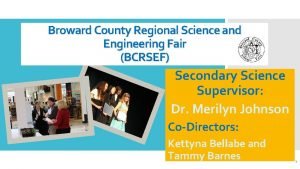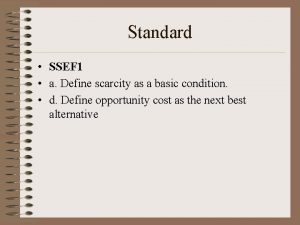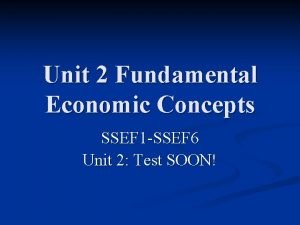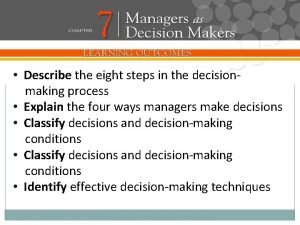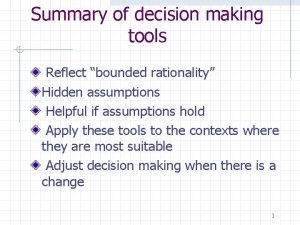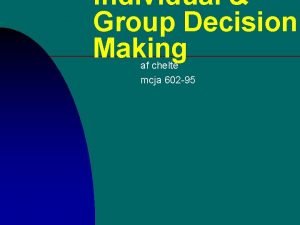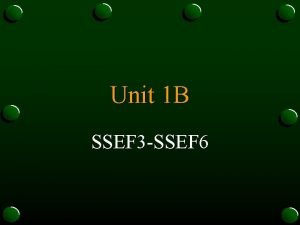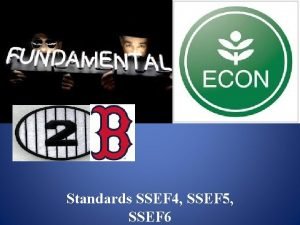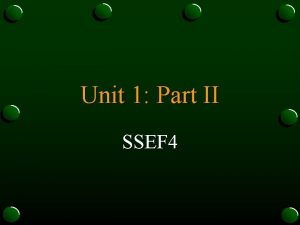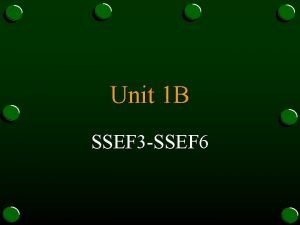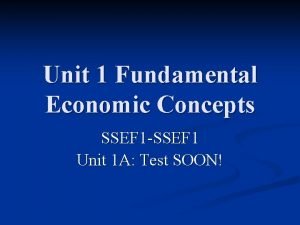Rational Decision Making SSEF 2 Decision Making Decision







- Slides: 7

Rational Decision Making SSEF 2

Decision Making • Decision making refers to the process by which rational consumers seeking their own happiness or utility will make choices. • The process begins by defining the range of options that are possible. • The next steps are to evaluate the costs, benefits and trade-offs involved in each choice and to reach a decision. • Since people have different preferences and face different life situations, there is no expectation that all people will make the same ultimate decision. • Not even economists believe that people always follow this decisionmaking process carefully since decision making is costly. • But economists do believe that, at least implicitly, people do consider their options and trade-offs and try to make the choice that brings them the greatest satisfaction.

Cost-Benefit Analysis • Cost-benefit analysis is a technique for deciding whether an action should be taken by comparing its benefits and costs. • It can be applied by individuals, firms or governments. • However, difficulties often arise when cost-benefit analysis is used by government; for example, it can be difficult for a government agency to compare anticipated costs and benefits. • If a cost of $100 million means that the view over the Grand Canyon is improved by 20 percent, how can an unbiased analyst decide if the benefit exceeds the cost? • Thus, cost-benefit analysis often ends up using somewhat controversial assumptions to put monetary values on lives saved, days of sickness avoided, wildlife habitat protected and so on. • Nevertheless, cost-benefit analysis provides a useful way of summarizing a great deal of information and organizing decision making.

Production Possibilities Curve • A table or graph that shows the full employment capacity of an economy in the form of possible combinations of two goods, or two bundles of goods, that could be produced with a given amount of productive resources and level of technology.

Production Possibilities Curve • In the graph above, a movement from Point B to Point C indicates that this society now prefers to build more consumer goods and less capital goods. • This movement from Point B to Point C shows the tradeoff involved in choosing a different combination of goods. • In order to gain more consumer goods this society is unable to consume as many capital goods.

Marginal Benefits and Costs • Economic decisions are always made on the basis of marginal costs and marginal benefits. • For example, the marginal cost of producing a good is the additional cost of producing one more unit of the good. • Similarly, the marginal benefit of consuming a good is the additional value of consuming one more unit of it.

Marginal Benefits and Costs • For example, we don't make decisions between spending the entire day watching TV or the entire day studying. • Instead, we choose between spending a little more time studying and a little less time watching TV, or vice versa. • So a decision between studying and watching TV involves comparing the marginal benefit of studying with the marginal benefit of watching TV, not comparing their total benefit. • The total benefit of studying could be far greater than the total benefit of watching TV, but after several hours of studying, the marginal benefit of studying could be less than the marginal benefit of watching TV.
